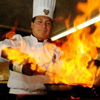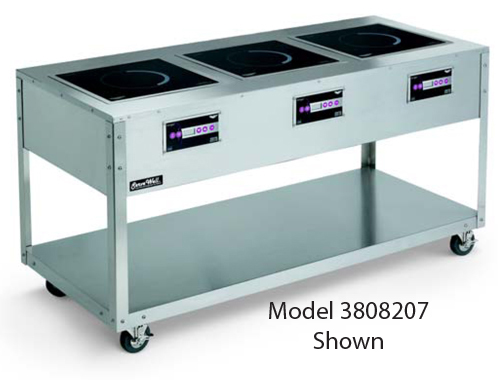 The presence of a large multi-burner gas range at the heart of the cooking line is about as fundamental as it gets in any restaurant. That iron and stainless steel behemoth uses a lot of energy, throws a lot of heat, and requires a dedicated ventilation system just to keep the cooks from getting overwhelmed.
The presence of a large multi-burner gas range at the heart of the cooking line is about as fundamental as it gets in any restaurant. That iron and stainless steel behemoth uses a lot of energy, throws a lot of heat, and requires a dedicated ventilation system just to keep the cooks from getting overwhelmed.
For decades no proper chef would have it any other way. That’s beginning to change, and the catalyst of that change is the induction range. Induction cooking works in a completely different manner than traditional gas or electric ranges. Instead of using a superhot medium like burning gas or an electrically heated element, induction ranges use the energy created by two opposing magnetic fields driven by an electric current to make the metal in the cookware itself become hot.
Sound a little geeky? It is, in a cool science project kind of way. For professional chefs, the most interesting thing about induction cooking are the practical advantages it can bring to the process, including:
Precision temperature control. While there is certainly a steep learning curve in the beginning, once a chef gets an induction range dialed in based upon the numbers on the knob, you can be sure you’ll get consistent, perfectly even heat every time. This is especially beneficial for low temperature and simmering applications, because an induction range can maintain a much lower heat than a traditional gas or electric range.
Speed. You’ve never seen a pot boil faster or oil heat up quicker than on an induction range. Because the metal of the pot or pan sitting on the burner becomes the heating agent instead of the medium, induction is by far the fastest way to heat whatever you’re cooking.
Efficiency. An induction range uses a fraction of the energy used by a traditional range. There’s also almost zero energy waste since the energy used to heat food is created in the metal of the cookware instead of below it. This energy is also created by a relatively weak electrical current, which can be much more inexpensive than natural gas.
Safety. An induction burner that’s turned on to full heat is still cool to the touch. As it heats metal cookware it will become hot, but the burner itself creates no heat. This makes induction much safer than traditional ranges. Some induction ranges even have automatic detectors that shut off the burner when there is no pan present, when the pan is empty, or when foreign objects fall onto the surface of the range.
Ventilation. Because induction ranges don’t burn fuel like a gas range, minimal ventilation is needed, and much less heat is created, even if you’re running induction all day on a busy line. This can save any restaurant a boatload of money on the ventilation and cooling costs normally associated with a traditional gas range. Make sure you consult the local regulations in your community when deciding how much ventilation you need to install for an induction range. In general, however, the requirements should be a fraction of those for a gas range.
Induction cooking isn’t for every restaurant. Some chefs don’t like the fact that cookware cools off rapidly when it’s not in contact with the burner – a distinct disadvantage for techniques that call for using the pan to flip or sautee ingredients as they cook. Induction also supports only certain types of cookware – usually stainless steel or cast iron – which means your aluminum cookware will be useless on an induction range.
If you are interested in induction cooking, Vollrath has been a pioneer in developing induction ranges, countertop burners, and even chafers for the food service industry. So far another factor slowing the widespread adoption of induction technology in restaurants has been the cost of equipment. As energy prices, especially natural gas, continue to rise and the cost of quality induction equipment comes down, however, induction cooking starts to make more and more sense.
 Corner Booth Blog | TundraFMP Restaurant Supply, News & Equipment Blog
Corner Booth Blog | TundraFMP Restaurant Supply, News & Equipment Blog




Thanks for the informative article. My [personal favorite thing about induction cookers is that they don’t heat up the whole apartment the way my old gas stove would. They’re so much more efficient.